Immigration and Visas to Ecuador
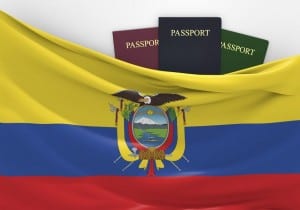 Obtaining an Ecuador visa is fast and simple.
Obtaining an Ecuador visa is fast and simple.
Whether you’re traveling fresh out of college, a retiree looking for a serene place to live, or an investor seeking opportunities, Ecuador makes it very easy for you.
The basics
Ecuador has a number of visa options that come with their own benefits and limitations. Generally,there are only two types of visas in Ecuador. These are:
- The resident (or immigrant) visa
- The non-resident visa
Figure out how long you’ll want to stay in Ecuador to determine which visa to obtain.
Non-resident visa
Visas are not required for those who intend to stay in Ecuador for up to 90 days only. This courtesy is known as the “12-X.’
For those who wish to stay for more than 90 days, you will need one of the following visas, depending on your situation:
- Student Visa
- Professional, Technical, Consultant, or Official Government Visas
- Religious and Volunteer Visas
- Cultural Exchange Visa
Each comes with a set of requirements.
Resident or Immigrant visa
For foreign nationals who want to become a permanent resident of Ecuador, a Resident or Immigrant Visa is necessary.
Applications are approved by the Immigration Board in Ecuador.
Resident visas are issued to:
- Retirees who receive pensions from their native country
- Real estate and securities investors
- Industry investors with export plans for agricultural products, livestock, and minerals
- Companies with foreign local agents
- Technicians and experts contracted for a local company
- Professionals and university degree holders who want to practice in Ecuador
- Individuals economically dependent on spouses or blood relatives
For queries related to resident or immigrant visas, consult with a lawyer versed in Ecuador’s immigration laws.
Check out our Services page to learn more about relocating to Ecuador.
If you’re in the US and you want more information on the opportunities available in Ecuador, call 239-848-5876. For all other countries, check out the other numbers you find on this page.
Medical Services in Ecuador
 Ecuador is fast becoming known for its booming medicinal tourism, and for good reason. Here, you can avail quality health care for a fraction of the price you pay back in the United States.
Ecuador is fast becoming known for its booming medicinal tourism, and for good reason. Here, you can avail quality health care for a fraction of the price you pay back in the United States.
High-quality and low cost
Whether you’re in the big city of Quito or Cuenca, or in a small village somewhere in the Yunguilla Valley, Ecuador ha a collection of clean and modern medical facilities that offer quality health care. Staff are well-trained and most of the doctors received education from the United States and Europe’s medical centers.
Expect the medical practitioners in the country to be well-trained. Some doctors in Ecuador even received training from renowned American and European medical centers.
A visit to a general practitioner can cost somewhere around $25 and $30, while a visit to a specialist can cost around $30-$40. As for ambulatory procedures, no need to shell out extra cash as such services are inexpensive.
Pharmacists in Ecuador are fully qualified to give away medical advice for minor ailments for free. As for generic medicine, such kinds in Ecuador cost much less than in the United States. No need for a prescription as most of the medications that require such paperwork in the U.S. can easily be bought over the counter in Ecuador.
Notable hospitals in Ecuador
- Hospital Alcivar in Guayaquil – Known as the oldest continual hospital in Ecuador, Hospital Alcivar originated as a small clinic and developed into one of the country’s most modern and largest medical facilities.
- Hospital Metropolitano de Ecuador in Quito – Inarguably the most famous hospital in Ecuador, Hospital Metropolitano was founded in 1985 and is considered the most technologically and procedurally advanced medical facility in the country. People flock to Hospital Metropolitano as it is most known for performing difficult types of surgeries. It enjoys a collaborative relationship with American institutions like Mount Sinai Hospital and Mayo Clinic.
- Hospital Universitario del Rio in Cuenca – the newest medical facility in Cuenca, Universitario del Rio offers state-of-the-art technology and attentive care. It was opened in 2009 and is fast becoming one of the most respected teaching hospitals in the international medical community.
There is still so much more to discuss about health care in Ecuador. For additional reading, you can check out our blog posts about medicinal tourism in the country here and here.
If you have any questions, email me at info@livethelifeinecuador.com. Once again, see you in paradise!
Food and Water in Ecuador

Fresh organic tomatoes in Ecuador
There are many things that make life in Ecuador amazing. One of them is the easy access to fresh and organic produce, and abundant clean water.
Ecuador currently devotes 56,303 hectares of farmland on organic crops like wheat, barley, corn, potatoes, fruit, coffee, and mushrooms, among others. In fact, according to the Research Institute of Organic Agriculture, Ecuador has successfully implemented international standards and regulations on organic farming.
The Biocentro Agroecologico, located just three kilometers south of the historic district of El Centro, is the country’s largest certified organic market.
With Ecuador’s agricultural industry ranging from massive farms and ranches to backyard gardens and cooperatives, anyone has access to fresh and locally sourced produce.
When it comes to water, Ecuador’s more urban areas are equipped with water filtration systems.Tap water is accessible via the public grid in 72 % of the homes, according to a 2010 national census.
The government is also racing to close the gap between urban and rural areas when it comes to providing clean water. A multimillion-dollar project is underway to improve access to drinking water in over 100 municipalities.
But, just as you would take precautions when traveling to any foreign country, tourists and visitors are better off drinking bottled water. While the local tap water may be perfectly safe and potable, it’s always best to err on the side of caution – especially if you have a sensitive constitution or you haven’t developed the immunity locals have over certain pathogens.
Safe water in Ecuador
As with all new destinations, making sure that the water youdrink is safe is fairly easy to do.
Buying bottled water or boiling tap water is a given.
But what else can you do to make sure you remain safe?
Here are a few tips:
- Avoid iced drinks if you can, unless you’re sure the ice is made from purified water.
- Avoid fruit and veg washed in tap water
- For longer-staying visitors, or those wishing to become permanent residents, see a doctor every six months to make sure you’re free of water-borne contaminants
- Have purified drinking water delivered to your home
Eating healthy in Ecuador
It’s easy to get fresh produce like fruit, veg, meat, and dairy products in Ecuador.
Supermarkets and grocery stores are, of course, a primary source of high-quality produce. They are found everywhere and the prices are reasonable.
Locals, however, shop at the local farmer’s market, the best place to spot good deals on fresh finds.
As is true in most places, local markets are often a showcase of the town’s choicest wares and produce. They’re usually sold at a fraction of supermarket prices and come in a wider variety than what’s available in grocery stores. In smaller neighborhoods, the local farmer’s market is just a short walk away.
Buying from farmer’s markets also stimulates the local economy because it cuts the middleman. It also fosters community when locals come out to support their own.
In Ecuador, the sheer variety of local produce is amazing. You’ll find everything from staples like bananas,lettuce, pineapples, tomatoes, and avocados to more unusual fare like soursop, zapallo, and dragon fruit.
In Ecuador, getting healthy is not a problem. In fact, getting healthy has never been this easy or delicious.
Want to know more about Ecuador and the opportunities available to you? If you’re in the US, call 239-848-5876. For all other areas, check out the other numbers you find on this page.
Money matters
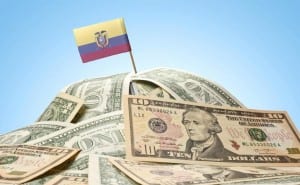 All good things in life are free, some say, but you can’t deny the fact that you have to spend some money here and there to enjoy little luxuries and attractions. When it comes to money in Ecuador, here are some things you need to keep in mind.
All good things in life are free, some say, but you can’t deny the fact that you have to spend some money here and there to enjoy little luxuries and attractions. When it comes to money in Ecuador, here are some things you need to keep in mind.
1. Ecuador’s official currency is the U.S. dollar. 15 years ago, Ecuador underwent a dollarization process which resulted to the elimination of the sucre.
2. ATMS are usually found at major banks, larger cities, airports, malls, and luxury hotels. However, a word of caution. In Ecuador, ATMs are usually offline more frequently compared to machines in other countries. Charges on withdrawals from foreign banks can be quite expensive, as well.
3. Carry some bills, but don’t forget your ATM card. Confirm with your bank to make sure your ATM card/s will work in Ecuador. Cash transactions are easiest, but if ever you run out of bills, you don’t need to worry. All you need to do is head to the nearest ATM to withdraw cash.
Always bring with you 1, 5, 10, and 20 dollar bills as they’re easier to accept than larger bills, even in banks.
4. Change your foreign currencies in Quito, Guayaquil, and Cuenca. While you’re in Cuenca, Quito, and Guayaquil, take advantage of its variety of banks and other facilities and have your foreign currency changed. Once you go out of these cities, it will be harder to spot a casas de cambioor money changing houses, as well as money transfer facilities.
Most banks in the cities are open Monday to Friday, from 9 am to 6 pm. Some banks in Quito and Guayaquil, however, stay open until 8 pm. Meanwhile, casas de cambioare open on weekdays, from 9 am to 6pm.
5. Diner’s Club is the most widely accepted credit card in Ecuador, but you can still use your card from American Express, VISA, and Mastercard. Before you get on the plane to Ecuador, consider raising the limit on your cards in case of emergencies.
Got any questions? Email me at info@livethelifeinecuador.com. See you in paradise!
Ecuador Visas: FAQs and tips
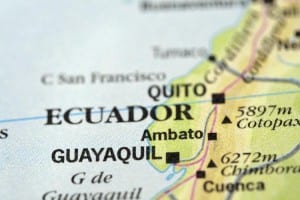 1. Who needs to apply for a visa to Ecuador?
1. Who needs to apply for a visa to Ecuador?
For American, Canadian, and most European passport holders, a visa is not required for a stay of less than 90 days.
2. How do I apply for a visa to Ecuador?
If you intend to stay for more than 90 days, apply for a visaat the Ecuadorian consulatenearest you.
3. What are the kinds of Ecuadorian visas?
There are 2 kinds of Ecuador visas: resident and non-resident.
The non-resident visa is automatically granted to travelers who intend to stay for less than 90 days. There are, however, special visas for longer-stay visitors who are non-residents if they happen to be cultural workers, volunteers, etc.
Resident visas are issued to those who plan on staying in Ecuador for more than 90 dayswith the intention of living, working, or investing in the country.
4. What are the requirements for non-resident visas?
For non-resident visas, you are required to present the following:
- Valid passport for more than 6 months
- A return ticket to your home country (land, sea, or air travel)
- Proof of economic capability to support yourself during your stay (may be requested by immigration authorities upon arrival)
5. What are the requirements for resident visas?
For resident visa applications, you will needto consult with an immigration lawyer. Resident visas come in several types that fit a specific purpose. An immigration lawyer will be in the best position to speed up the application process.
6. How long does it take to apply for a resident visa?
Applications take from 4 to 8 weeks to process because resident visas are approved by the Immigration Board in Ecuador.
7. What happens if I overstay in Ecuador?
You will pay a fine of $200 for every day that you overstay. You will also be barred from re-entering Ecuador for 90 days following your departure.
If you’re in the US and you want more information on the opportunities available in Ecuador, call 239-848-5876. For all other countries, check out the other numbers you find on this page.
Kite Surfing Southwest of Manta
The port city of Manta is the fifth-largest city in Ecuador, and one of the largest cities in the province of Manabi. The city is famous for being an important hub for the country’s fishing and tuna-processing industries. It is also an attractive tourist spot due to its vibrant nightlife and close proximity to the handicraft town of Montecristi.
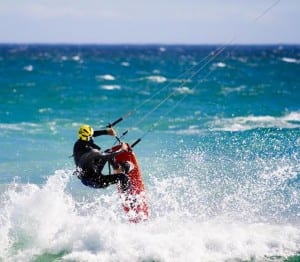 Additionally, Manta is increasingly becoming a popular jump-off point for outdoor enthusiasts heading to Santa Marianita Beach, a world-class spot for kite surfing/kite boarding.
Additionally, Manta is increasingly becoming a popular jump-off point for outdoor enthusiasts heading to Santa Marianita Beach, a world-class spot for kite surfing/kite boarding.
The perfect kite surfing destination
Because of its fantastic conditions for kite surfing, Santa Marianita Beach is recognized as one of the best beaches in the entire world for the sport.
The beach boasts an extended windy season that stretches from May to December, with wind speeds that average 14 to 25 knots. The 5km sandy beach combined with side-onshore wind direction and one to two-meter waves makes Santa Marianita Beach a safe and enjoyable location for beginners as well as experienced pros.
Kite surfers in Santa Marianita Beach typically use kites that measure 9m to 12m. The perfect time to kite surf is usually around noon, with the wind gradually increasing towards mid-afternoon. Kite surfers can enjoy consistent, calm wind conditions with no gusts that can last until 5pm.
More experienced kite surfing enthusiasts can choose to schedule their trip during November to January, as bigger waves that can reach up to three meters start to come in.
Other activities in Santa Marianita
- Visitors can drop by the nearby town of Montecristi to shop for handmade crafts and other great souvenir items. Montecristi is the town where the famous Panama hats are made.
- Surfing is a popular activity in other beaches south of Santa Marianita. Tourists can also experience whale watching at some of the beaches from June to October.
- The Machalilla National Park in Puerto Lopez is easily accessible from Santa Marianita. Here, many tourists can enjoy activities like snorkeling, whale watching, and hiking.
—
If you’d like to find out more about Santa Marianita Beach and other superb kite surfing destinations in Ecuador, get in touch with Torrin Brauch at 239-848-5876 (US) or 097-994-7640(Ecuador). You can also send him an email at torrin@livethelifeinecuador.com
The Best Accommodations in Puerto Lopez
Finding the right accommodations is every traveler’s concern. While you are off enjoying the sun-kissed beach or snorkeling in the sapphire waters of the Pacific, you want the peace of mind that comes from knowing you have a safe and comfortable place to stay at the end of the day. In the sleepy and rustically charming town of Puerto López, travelers will find many accommodation options.
Popular among tourists, especially during whale watching season, Puerto López has numerous options that range from cozy inns to luxurious hotels. Whatever your preference, you will surely find a great place to stay in Puerto Lopez:
-
Victor Hugo Hotel
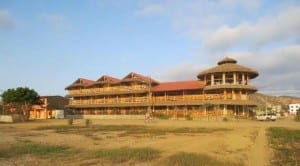 This waterfront hotel features wood and brick details with open balconies so you can better appreciate the view. Accommodations at the Victor Hugo Hotel are designed to cater to a wide range of people from solo backpackers to newlyweds on their honeymoon.
This waterfront hotel features wood and brick details with open balconies so you can better appreciate the view. Accommodations at the Victor Hugo Hotel are designed to cater to a wide range of people from solo backpackers to newlyweds on their honeymoon.
The rooms feature rustic wooden furnishing and are equipped with private bathrooms with heated showers. The Victor Hugo Hotel is also conveniently located to Puerto López’s primary attractions such as the Salango Beach, Frailes Beach, and Tunas Beach. This is the perfect accommodation for travelers who want to make the most of the area’s sights and attractions.
-
Piedra Del Mar Hotel Boutique
The Piedra Del Mar Hotel Boutique is a trendy hotel located just walking distance from the beach. It is also located very close to Puerto López’s various points of interest from shops to restaurants. Its architectural sensibilities are a melding of trendy design and comfort. The accommodations range from single-bed rooms to family suites. Each room has its own bathroom with heated showers.
-
Hotel Pacifico
Hotel Pacifico has been serving tourists and locals alike for the past 30 years. It boasts an oceanfront restaurant, beautifully appointed rooms, and friendly and expert service. Over the years, Hotel Pacifico has evolved with the changing times. It has undergone several renovations over the years to better serve their guests.
-
Hostería Cabanas Itapoa
Hostería Cabanas Itapoa offers guests a truly laid-back experience while in Puerto López. It operates froma charming house with lush gardens where visitors can choose from cozy rooms to spacious bungalows. Hostería Cabanas Itapoahas a distinctly relaxed vibe, with hammocks and a great view of the beach.
Tips for real estate investors in Ecuador
 With its abundance of investment opportunities, Ecuador is one of the top locations when it comes to overseas investing. One of the many reasons why the country attracts many foreign investors is its lenient investment regulations. Whether you’re a foreign or local investor, you can expect equal treatment – foreign investors basically have the same rights as Ecuadorian citizens.
With its abundance of investment opportunities, Ecuador is one of the top locations when it comes to overseas investing. One of the many reasons why the country attracts many foreign investors is its lenient investment regulations. Whether you’re a foreign or local investor, you can expect equal treatment – foreign investors basically have the same rights as Ecuadorian citizens.
If you’re planning to invest in Ecuadorian real estate, here are a few tips that can help you:
Get professional assistance
While you can land several good foreign real estate deals directly from owners, purchasing through a reputable real estate professional can save you from running into potential roadblocks when buying overseas property.
At LiveTheLife, we’ll make every effort to help complete each deal, keeping you well-informed throughout the entire process.
Translate any documents written in a foreign language
Have any documents relating to a real estate transaction professionally translated before signing them. Signing anything you don’t understand is incredibly risky – you will want to make sure you fully understand what you’re agreeing to.
Guard against potential legal issues
Even though Ecuador does not have that many restrictions when it comes to foreign investments, it’s always a great idea to seek the services of a locally licensed lawyer to assist you with your purchase.
LiveTheLife ensures all transactions are completed by attorneys who will conduct title searches and go through the necessary steps in order to guarantee an accurate title is delivered.
Look for a dependable foreign exchange solution
After you read, understand, and agree to the terms of purchasing an overseas property, the next step is to pay for it. It can get a bit tricky, as local banks usually provide sub-par forex services.
What you need to do is find better foreign exchange solutions that can allow you to make mortgage payments without any hassle, allowing you to save money as well.
Benefits of living in Lentag, Ecuador
The small town of Lentag is often overlooked by tourists looking for mainstream thrills, but very well-loved among travelers in the know of the best, hidden Ecuadorian secrets. Here are some reasons why Lentag will make you fall in love and even make you want to stay forever.
1. Lentag is blessed with a perfect climate.
You can fulfill your dreams of living in a tropical paradise in Lentag, a place that enjoys hot summers, cozy rainy weather, and a pleasantly mild climate all year round. The climate in Lentag is classified under the Köppen climate classification system as tropical moist, which allows its local flora to bloom and grow beautifully. Annual precipitation can reach up to 530 mm but just think of the heavens watering the bounties of Lentag. You’ll benefit from it.
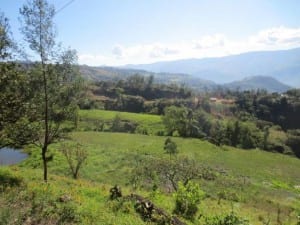
Lentag is a perfect place to find yourself and reconnect with the world.
2. A lush, tropical landscape.
If you want to “eat, pray, and love,” Lentag is a perfect place to find yourself and reconnect with the world. Its lush, tropical setting surrounded by the slopes of the Ecuadorian Andes provides a backdrop that is perfect for meditation and relaxation. If you’re itching for adventure, however, the next item will excite you.
3. There are plenty of recreational opportunities.
Whether you’re interested in extreme sports or cultural and artistic endeavors, living in Lentag lets you live in close proximity to such recreational opportunities.
Parque Extremo is a favorite among vehicle sports enthusiasts. Ride like a pro, whether you’re into F1, rallying, or motor cross. The town of Giron is also a short drive away – the place is popular for the El Chorro waterfalls. The cultural center of Cuenca is located farther up north, but a trip worth taking. San Fernando’s scenic Laguna de Busa is located west of Lentag.
Biking is also a popular activity in Lentag – the town is home to a network of trails that can accommodate bikers of all skill levels. Hiking is also another recreational pastime in the area.
4. A slower pace of life.
Basically, Lentag offers an opportunity for expats as well as travelers to enjoy a slower pace of life in Ecuador. Its warm and friendly people, delectable local fares, and scenic beauty make it an ideal place where you can enjoy the simple things in life to the fullest.
Benefits of living in Cuenca, Ecuador
The cultural heart of Ecuador, with its high-altitude location and well-preserved identity, may very well be what your soul is craving. What are the benefits of living in Cuenca? We’ve compiled a list of things that make life quite worthwhile in this historical city.
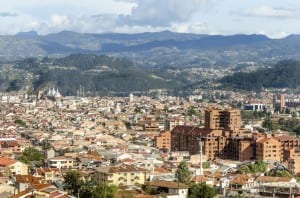
Cuenca as seen from the west
1. No pollution can contribute to a clean bill of health.
Located high up the Ecuadorian highlands, Cuenca’s environment is clean and safe. There is no shortage of fresh air for you to breathe – a startling contrast when compared to other bustling South American hubs.
2. Inspiration is everywhere.
Once the playground of esteemed philosophers, artists, poets, and writers, Cuenca serves daily doses of inspiration to its residents. If you’re a writer experiencing the much-dreaded block, take a stroll through Cuenca’s network of historic streets and get inspired. The same get be said for aspiring painters and artists who feel like they’re stuck in an artistic hellhole. Use Cuenca’s well-preserved historic buildings and rich culture to fuel your next project.
3. Stressful city life in Cuenca? Impossible.
While we can’t vouch that you won’t be completely impervious from stress as it is the effect of so many factors, you don’t need to worry about the usual city stresses that plague the residents of urban centers. If you need a breather, just go to one of Cuenca’s well-maintained and scenic parks to refresh your mind and just enjoy your surroundings.
4. It’s the place to satiate your Ecuadorian food cravings.
Food culture is alive and thriving in Cuenca. Cuenca’s streets are lined with restaurants serving up authentic Ecuadorian fare everyday – it’s practically a foodie’s paradise! If you’re also in the mood for intercontinental flavors, some of Cuenca’s dining establishments serve international cuisine (which is great, if you’re dealing with a case of homesickness).
5. The city is home to a warm community of expats.
Speaking of homesickness, sometimes we just want to talk to people who, one way or another, relate to our experiences. Cuenca is home to a vast number of expats who are always welcoming of new people who have decided to make the city their new home. Did we mention Cuenca is cheap, too? But you probably know that already, don’t you? After all, it’s one of the city’s biggest draws.

